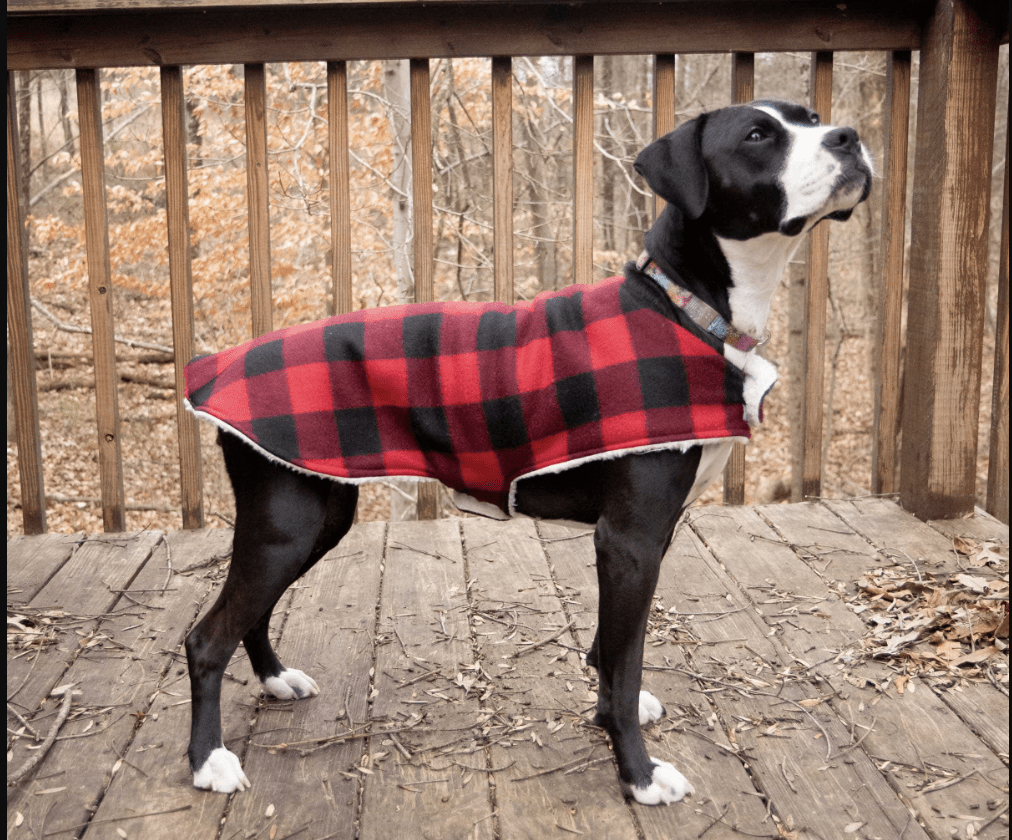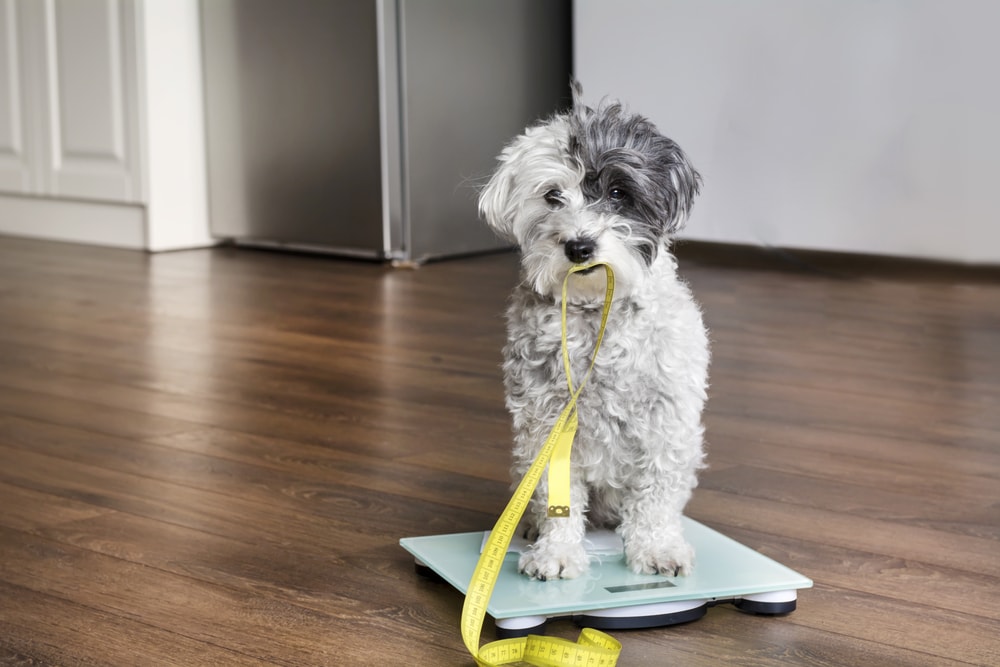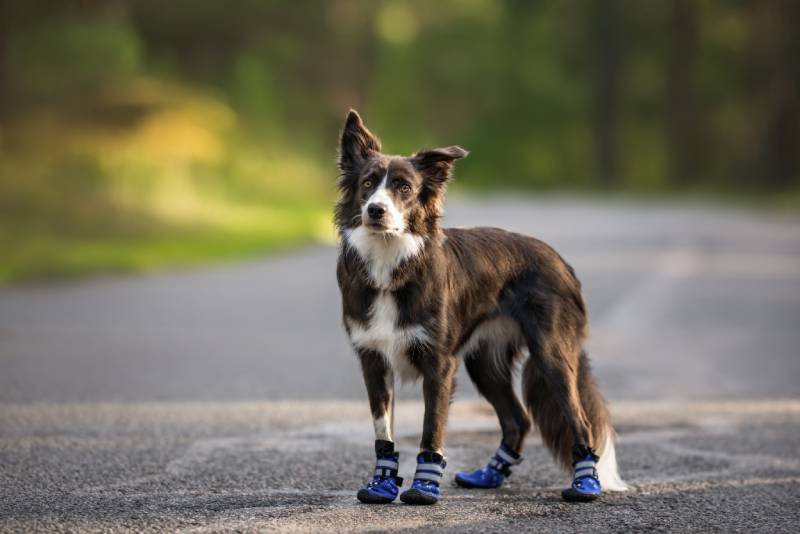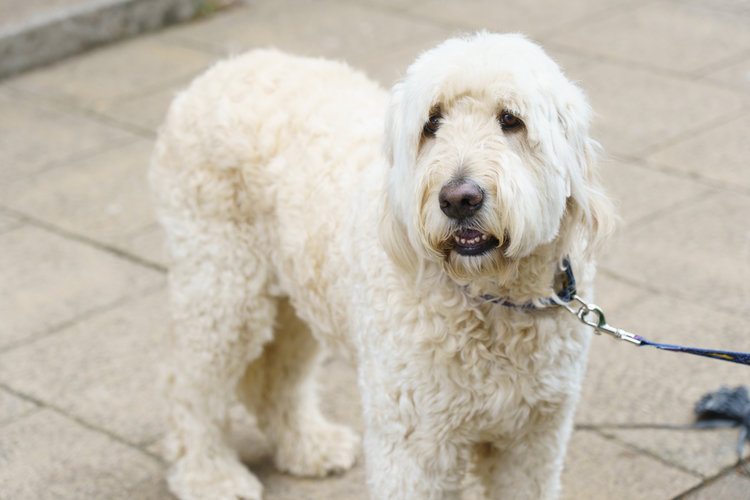How to Measure a Dog for Clothes: 5 Expert Tips & Tricks
Updated on

Whether you’re planning to get a matching Halloween costume for your dog or want to get a coat to keep your pup warm, you’ll have to measure them correctly. Getting your dog’s measurements can be tricky if you’re doing it for the first time. But worry not! We’ve got a guide to help you out. Grab your tape measure and start reading below.
Supplies Needed to Measure Your Dog
You only need a few things to measure your dog. The first is a soft measuring tape, and the second is treats.
Some dogs have difficulty sitting still, especially if you’re prodding them with a measuring tape. Treats will keep them occupied and also serve as a reward for their patience.

The 5 Steps on How to Measure a Dog
Note that you must measure three main areas when taking your dog’s fittings. These include their chest, body length, and neck. Here’s how to measure them:
1. Measure the Neck
Since most clothes, such as coats and sweaters, have a neck opening, you’ll need to measure the circumference of your dog’s neck. Even if you’re getting doggy button-downs, measure your pet’s neck to ensure the clothing item is not too tight.
Wrap the tape measure around the base of your dog’s neck. The base is the point right where the neck and the shoulders meet. Hold the tape measure so you can slip two fingers underneath them. The two-finger gap ensures you do not measure too close to the neck. Anything too tight can cause discomfort to your puppy.
If your dog is between sizes, it’s best to choose the larger size.
2. Measure the Chest
The chest is the widest part of your dog’s body. It is usually behind the front legs and includes the rib cage.
Make your dog stand and wrap the tape measure behind their armpits. Wrap it under the body and then around the rib cage and the shoulder blades.
The tape measure should cover the widest part of your dog’s chest. Use the two-finger rule again and opt for the larger size if your dog is between sizes.

3. Measure the Length
To measure the topline, make your dog stand straight. Measure their length from the top of their spine at the base of the neck, where it joins the body to the base of the tail.
You’ll need to adjust your measurements for a male dog. Ensure the clothing item you buy has a cut-out for the male dog’s belly or groin. If not, you should shorten the length of the clothes to reduce the risk of them urinating on new clothes.
4. Check the Sizing Guide
Now that you have three measurements, you can use them to find the right size for your pup. Here is a general size guide, although one should be provided on the website you’re buying from or on the packaging:
- 6 1⁄4 inch (15.24 and 0.64 cm) = XXS
- 8 1⁄2 inch (20.3 and 1.3 cm) = XS
- 11 inches (28 cm) = S
- 13 inches (33 cm) = M
- 15 inches (38 cm) = L
- 17 inches (43 cm) = XL
5. Buy Doggy Clothes
You’re all set to buy clothes for your dog now. If you’re buying in a store, ask if they have a dressing room where you could check how the clothes fit your pup.
But if you prefer online shopping, choose a place that takes returns or offers replacements. You can also share your dog’s breed, age, and picture with customer support, and they might help you find the right size.

How to Measure Your Dog for Socks and Boots
Take the tape measure and measure the length of your dog’s front and back paws. You’ll only need to measure the length in this case.
Add a centimeter or two to the measured length to account for the nails. However, the boots shouldn’t be so loose that your dog cannot walk comfortably.
If possible, put the shoes or socks on your dog in the store and make them walk around. It will help you see how snug the shoes are and if they affect your pet’s mobility.
A dog with wide paws will need larger boots, which may be loose above the paw. So, look for boots that can be fastened around your dog’s ankles to prevent slipping and twisting.

Shutterstock
Tips for Measuring Your Dog for Clothes
- Choose a calm and quiet environment for measuring your dog. It will help avoid distractions and keep your pet relaxed.
- Keep your dog standing straight during the measurement. If they are lying down or sitting, the measurements will be inaccurate.
- If you cannot do both things—keeping your dog occupied and measuring—simultaneously, get a helping hand. Let someone feed treats to your dog while you measure them.
- Measure twice. Making mistakes is easy, so you should measure twice just to be sure.
- Make sure you’re using the proper measurements. The sizes will be in centimeters or inches, depending on the country and the retailer. Convert the measurements to the correct unit before buying your pup’s clothes.
- When measuring paws, measure both front and back paws. In some breeds, the size of the front and back paws differs. You’ll need two different pairs for them.
How to Find the Right Clothes for Your Dog
Even if you measure correctly, some clothes may not fit well on your dog because of their shape or your dog’s stature.
- If your dog’s hips are slimmer than the chest, buy a coat with leg straps. Otherwise, the coat will keep flipping up on your pet’s back.
- Check the underbelly of the coat when you’re trying it on your dog. Choose a smaller size if the underbelly goes too far down the belly.
- If you buy a sweater or T-shirt, ensure there is enough room in the neck. It should be loose enough to fit their neck easily and give them enough room to move around.
- Buy clothes based on your dog’s activity level. If your dog jumps or runs around a lot, buy them comfortable clothing. Their clothes should not impede their ability to move, or you’ll have a lot of rips to mend.
- When buying boots, match the style to your pet’s paws. Some boots have a soft material to let the boot bend with your pet’s feet. Meanwhile, others have a hard sole to keep the paws stable.
Conclusion
Buying clothes for your dog is quite fun, especially for special occasions. But if the sizing isn’t right, your dog will be uncomfortable in even the most fashionable clothes.
You must measure your dog’s chest, neck, and total length to figure out its clothing size. Don’t forget the two-finger rule, as it helps you choose comfortable clothing for your dog.
When looking for socks or boots, measure the length of your pet’s paws. Add a couple of centimeters to the measured length, and make sure you try them on your dog in the store.
Featured Image Credit: Liliya Kulianionak, Shutterstock












